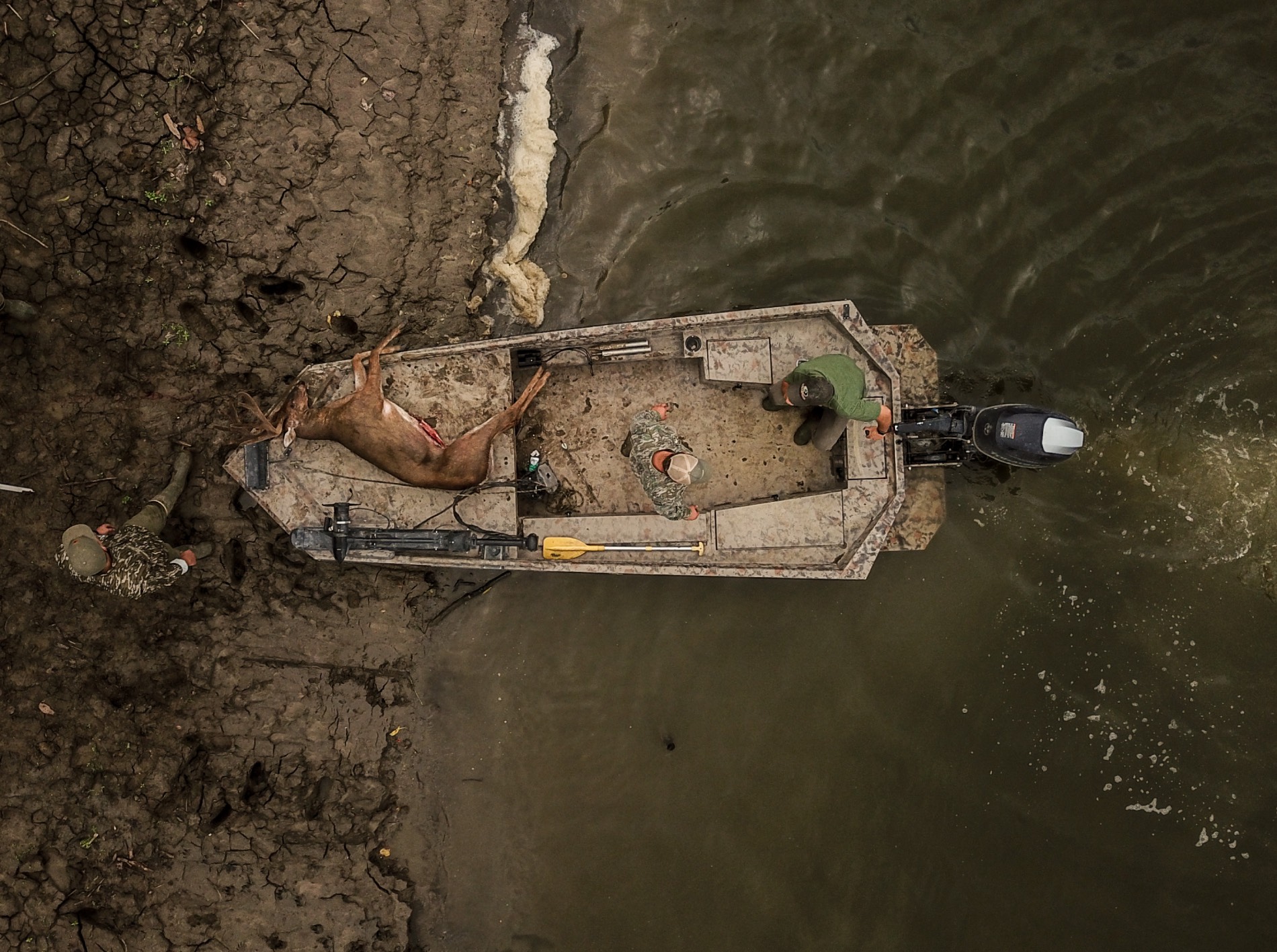Phillip Gentry
An enterprising deer hunter looking to access relatively un-pressured public deer hunting land could do much worse than looking at areas where both public waters and public lands exist.
Overlap these two priceless recreational venues and even the casual observer will see that some of the most remote areas of hunting land are adjacent to easily navigable waters.
Now, enter the boating deer hunter. Imagine pulling your rig into a spacious public boat landing, launch your boat, motor a short distance on an easy to travel water ways (even at night) and ease into a pristine creek bottom or hardwood stand virtually undetected. All that is needed, beyond the normal deer hunting gear, is a good hunting boat.

Photography by Mossy Oak friend Hunter Lewis
What Makes a Good Hunting Boat?
Versatility is the key. Most boats that are good for hunting also do double duty as a fishing boat, but the opposite is not always true. Boats with expansive open decks and a wide foot print will provide ample room for hunters and gear. Hunters who access public land by water will need to bring their own stand if they intend to hunt from an elevated position. Two or three hunters plus weapons, gear and tree stands will require a good bit of room. Fishing amenities like pedestal seating, expansive electronics, even a trolling motor is rarely of use in a hunting boat.
Ample dry storage is also a big plus. Most anything that the hunter might need or that would ordinarily be kept in the truck will have to go on the boat. This list includes rain gear, additional clothing, and the typical assortment of calls, flashlights, rope, and other deer essentials.
For hunting in colder weather, it’s nice to slide in behind a windshield when running up the lake, but most hunters will not be a big fan of carpet when it comes to tracking in and out of muddy bottoms or transporting a fresh killed buck. Ideally, a rig with vinyl flooring or other non-skid surface can roll through a drive-in carwash on the way home and not have to hassle with a lot of cleaning.
One of the greatest benefits of accessing deer land by water is it’s quiet approach. Hanging a whisper quiet 4 stroke outboard motor on the back of the boat is preferred over the old two strokes.
Mossy Oak's Recommendations on Hunting Boats:
SeaArk Boats
Avid Boats
Havoc Boats
Prodigy Boats
Benefits and Strategies for Hunting Public Land Whitetails with Boats
Some of the other benefits the boating hunter has are that the proximity to water may provide better habitat for deer. Lake winds can bring slightly warmer temperatures off the lake during the season which protects blooms and buds. This benefits deer in the form of more soft mast like muscadines and hard mast crops such as acorns and nuts. Open lake areas also permit more sunlight penetration into the forest, resulting in more diversified undergrowth which draws more deer.
Boating hunters can not only access public property by boat but also make use of watercraft for scouting. Boating along the shoreline of a prospective hunt area allows you to cover a lot of ground by visually scouting stands of trees from the water. Boaters can check the available acorn crop with binoculars without stomping up the area. Once a good acorn stand is found, it’s just a matter of locating scrapes, rubs, or trails leading into the area to know where to place your stand.
Scouting from the water also allows hunters to quickly identify drainages washed into the landscape from water run-off that lead from higher ground to the water. These make for good funnel areas. Deer often use these funnels to make their way down to the lake to get water or feed on new grass that flourishes in the backs of coves.
Drought conditions that drop water levels of lakes and waterways surrounding public lands can result in both positives and negatives for boating hunters. Drought makes finding water a consideration for deer, which head to the lake or river for both water and cooler areas.
Water areas are also the last to lose plant growth from drought resulting in plants and grasses that thrive at waters edge while other natural crops inland suffer. The drawback is that navigation in low water conditions, particularly before daylight and after dark can be treacherous. Hunters need to use extreme caution navigating in the dark.
Keep in mind that rules and regulations that apply to public lands are as varied as their terrain. While some areas permit archery hunting only, others may allow firearms hunting but limit the type to shotguns or limit the distance the hunter must be from the water in order to use firearms.
It’s best to check the regulations that apply to the area you intend to hunt. While crowding is usually not a problem, select several areas to hunt and if you pull into a cove and see 2 or 3 other boats beached along that area, move to an alternate spot.
Of utmost importance is safety, but also the use and enjoyment of your public land. Pressure increases every day to allow private development of public lands. This land is yours, get out there and enjoy it.






























